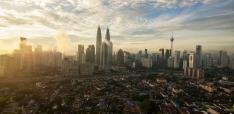Beyond the G-20: Mitigating the Costs of Global Imbalances in the Absence of Global Coordination
The absence of a global regime to prevent and mitigate financial crises and a reluctance to resort to the International Monetary Fund for assistance has led emerging market and developing countries to accumulate vast sums of foreign reserves as an act of ‘self-insurance’. If a nation has a backstop of foreign reserves and an external shock such as a financial crisis results in capital flight from such a country, the nation can use those reserves to stabilize the currency.
The insurance incentive was acute in the run up to the crisis, but the incentive to accumulate reserves in the wake of the global financial crisis has been even stronger given the scale of the crisis and the lack of an adequate response to it in terms of global economic governance. Not surprisingly then, reserve accumulation in developing countries has not only continued to increase in the wake of the crisis, but has increased at a faster rate than previous to the crisis. What is more, excess reserve accumulation has been costly at both the national and global levels. Nationally, because the opportunity cost of accumulating reserves can be high, globally because of the global imbalances created by surplus and deficit nations.
Such are the findings in a forthcoming paper with Elen Shrestha from Tufts University in Global Policy, and they warrant national, regional, and global policy discussion. We find that the social costs of reserve accumulation in emerging market and developing countries is high for those countries and the world at large. Duplicating methodologies used to estimate the social cost of foreign exchange reserves previous to the crisis, we estimate the extent to which foreign exchange reserves were accumulated or sold during the global financial crisis and what the social costs of any excess accumulation has been.
We find that the social costs of foreign exchange accumulation in excess of what is deemed adequate for insurance purposes could be as high as 1.8 percent of GDP for the developing world, and could be higher than 3 percent of GDP for China. According to our calculations, the developing world may have between $98 billion to $266 billion in assets in excess of what is needed to protect themselves from shocks, or 5 to 16 times the amount of benefits that could be made available by liberalizing world trade under the Doha Round at the World Trade Organization.
Emerging market and developing nations have a significant opportunity to strengthen their economies while reducing global imbalances and financial fragility. The global financial crisis has triggered new thinking about global capital flows and development finance. The analysis in this paper lends support to the notion that developing nations should seek other ways to insure against external shocks. The recognition within the economics profession and in international financial institutions that capital controls can be effective may provide an opportunity for developing nations to buffer their economies from external shocks, free-up opportunity for productive investment, and subsidize the cost of foreign exchange accumulation, all while reducing global imbalances.
There has been a revival in the use of capital controls to manage short-run inflows into developing countries in the wake of the financial crisis (Gallagher, 2011). Moreover, such measures have been proven to be at least modestly effective and are now being recommended by the IMF in certain circumstances (Ostry, Ghosh et al., 2010). Such an approach, deployed after the adequate supply of reserves (and perhaps a cushion as we discuss above) would be less costly and would grant nations more flexibility to invest in building endogenous productive capacity for balanced growth.
Three mechanisms that have been gaining traction in this area are the creation of commodity stabilization funds, sovereign wealth funds (SWFs) and the establishment of national development banks. An additional possibility that has been proposed by developing countries is to capitalize the multi-lateral development banks. Nations such as Chile have established stabilization funds from windfall commodities profits to use for macroeconomic stabilization and development policy. SWFs have proven to be fairly profitable, in both advanced and developing economy situations. Indeed, many emerging nations such as Korea, China, Singapore, Peru and others have recently established SWFs with reserves or windfall profits from commodities sales. SWFs have allowed such nations to invest in activities with a higher return on investment (though at higher risk).
Second, another option is development banking. Both China and Brazil have reinvigorated their development banks and now make significant national and global financing available for economic diversification, infrastructure and the provision of public goods. What is more, these banks are now beginning to provide development aid to other developing countries—often without the harsh conditionalities and stigma of the Bretton Woods institutions.
Finally, capital controls can not only change the composition of capital inflows to developing countries, but if conducted in the form of taxes on inflows can provide a subsidy to offset the cost of reserve accumulation. In a recent paper, Aizenman (2009) shows how a tax on external borrowing would reduce the amount of reserves needed in emerging markets while simultaneously funding reserve accumulation by the very capital flows that expose the economy to the need to self-insure.
In an ideal world, through the G-20 or other more globally representative bodies nations of the world would negotiate a regime that would coordinate national efforts to prevent and mitigate financial crises. The political economy of intransigence prevents such a regime from becoming a reality. It is thus rational for developing countries to self-insure by accumulating reserves. However, new thinking suggests that managing liquidity and exchange rate pressure can be done in a less costly manner through the effective use of prudential capital controls.
Kevin P. Gallagher is associate professor of international relations at Boston University and senior research associate at the Global Development and Environment Institute, Tufts University, USA.
[1] Ackerman, F. and K. P. Gallagher (2008). "The Shrinking Gains from Global Trade Liberalization." International Journal of Political Economy 37(1, Spring 2008): 50-77
[2] Aizenman, Joshua (2009). "Hoarding international reserves versus a Pigovian Tax-Cum-Subsidy scheme: reflections on the deleveraging crisis of 2008-9, and a cost benefit analysis,” NBER Working Paper No. 15484
[3] Gallagher, K. P. (2011). Regaining Control? Capital Controls and the Global Financial Crisis, Political Economy Research Institute, University of Massachusetts.
[4] Ostry, J. D., A. R. Ghosh, et al. (2010). Capital Inflows: The Role of Controls. IMF Staff Position Note. Washington, International Monetary Fund


